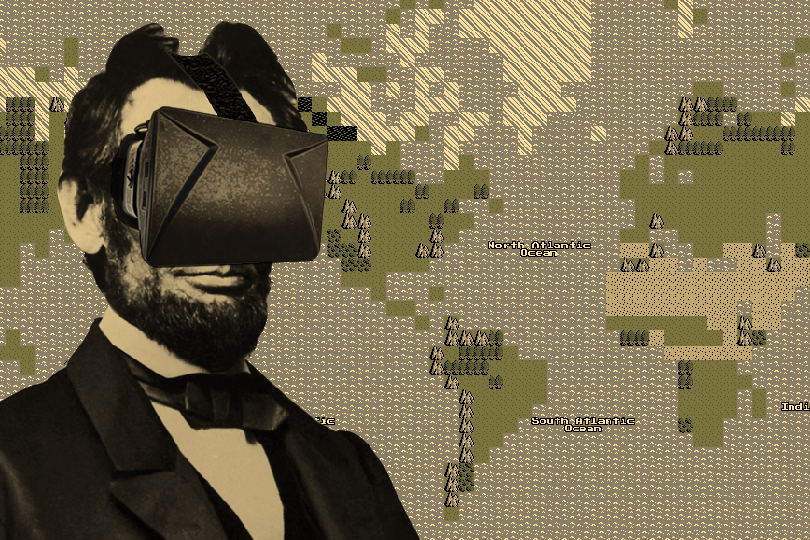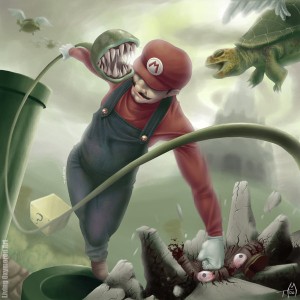Video games have been ‘in development’ in some for or other since the 1950s; back when men were men and women were still oppressed! It’s probably factual to say that they have come a long way from their beginnings as private projects, constructed by nerdy programmers and engineers, to the massive entertainment industry they are today. For a very long time games have been considered trivial entertainment reserved for noisy arcades or sticky-walled teenage bedrooms but as we all know now: video games grew.
If we drive our metaphorical Delorean to 88 miles per hour and travel back to 1972, only a few months after Pong was released, we could witness first hand those first baby steps towards the industry that gobbles up all of our pocket money today. I’m talking about a company named Magnavox and the release of the first home gaming system, which was named the Odyssey. Certainly a better name than ‘Xbox’ or ‘Playstation’ and don’t even get me started on the Wii.
Though the console was apparently crippled by misinformation that it would not play on all television sets (if not because it looked like it belonged more in a lab then in anyone’s living rooms), it still sold a significant 100k units, as it played Pong on a television screen. Pong. On a television screen. Does that blow your mind? Don’t look at me like that, I know you’re used to your instant gratification and you super high resolution everything, so sod off!
More individual consoles were released, each with specific but basic games, but it wasn’t until four years later in 1972 that the ability to play more than one game on a console was introduced. Does that blow your mind? Can you imagine having to change console if you wanted to play a different game?
Cartridges caused a huge change in video games; the ‘Fairchild Channel F’ was released with a number of different games available to play and it created a market potential to increase sales by selling them. Moving forward again, it wasn’t until 1983 that we see any familiar names, such as Nintendo releasing their first console, the Famicom, in Japan. Prior to this, Atari had the largest market share, and the rest of game developers were generally independent developers.
It was also in 1983 that America almost lost their market for video games entirely; due to a lack of interest caused by a general disenchanted feeling towards the fledgling industry it almost collapsed. This crash spread through to 1986, at which point Nintendo took a big risk and ported the Famicom to the US as the Nintendo Entertainment System or ‘NES’ for short. It had been slightly updated, but was in essence the same console. By taking this risk, Nintendo helped revitalize the industry in America and the west. The NES was a strong console through to 1990, with another recognizable name popping into the equation, Sega appeared as the strongest competition to the NES with their new ‘Genesis’ console. Pong The Fairchild Channel F The competition between the companies forced both to improve the hardware developed, in 1991 the Super Famicom/Super Nintendo Entertainment System was released, which had updated power, graphics and in general better games.
This rivalry continued to push Nintendo and Sega into creating more technical machines, but another 4 years later and another of the biggest names in consoles pushed into the market: In 1995 the Playstation was released by Sony and, though Japan was slow to take to it, in the west the Playstation was a huge hit. Sony, Nintendo and Sega were all now competing for the market share, and though they were still considered a big development company, Sega was coming out worst in the battle of the consoles, their new console the ‘Saturn’ did poorly and in 1996 when Nintendo released their answer to the Playstation, the Nintendo 64, Sega were losing more then they could afford to. Their last attempt at a console, the Sega Dreamcast, is widely acknowledged as technically brilliant, but unfortunately it still did not sell well enough to keep Sega in the ‘race’ and they stopped releasing new consoles since, becoming a video game development company instead.
The Playstation 2 was so succesful, it was even released in this tacky pink colour. Again we move further forward to 1999, and we now see the huge effect that Sony had on opening up the market even more, when the Playstation 2 opened with a phenomenal reception for both die hard gamers and casual alike. The Playstation succeeded with good marketing and a good image, the added bonus of having a DVD player inside the console gave a full impression of a home entertainment machine, and was an obvious incentive for many people who otherwise would not have been interested. This generation of consoles brought the Nintendo’s Gamecube into life, and we saw the inclusion of Microsoft with their console, the X-Box. The Xbox itself brought with it many new ideas and improvements upon the basis that Sony, Nintendo and Sega were building up. Their console came with it’s own storage device, and the online system was developed into an easy and fun experience. Xbox Live was launched, which suddenly levelled the playing field between consoles and PC games, which had been online for several years before. The market for video games seems to have grown exponentially during this period while consumers were waiting for the latest generation of consoles, the generation we are currently in. First to be released was Microsoft’s second attempt, the Xbox 360 in the Christmas 2005, which boasted High Definition gaming, improved power and an even better online service.
Then we saw the Nintendo Wii released almost a year later in 2006 and since their launch they have pushed a marketing campaign that was even more successful than the Playstation 2’s. It seems the Wii has managed to introduce the aspects of casual gaming into mainstream media, people who had not been interested in games even after the success of the Playstation 2, have been introduced to new types of games, like fitness and sports games that emulate their real life counterpart in more than just visuals. The Wii has a unique system that defies conventional console controllers by being motion sensitive, which opens up a whole new way to control and interact with video games. The Playstation 3 was released last year, in 2007, but it has not had a high critical success and the console is very expensive. Despite this, it is still selling in huge amounts in Japan, across America and in Europe.
To this day, however, the Playstation 2 is still the best selling console of all time, though the Wii seems to be making a fair attempt to break that record. I believe that games now are more popular because they’re becoming more realistic, and when realism is not applicable, more interesting and fun, and people are now beginning to see video games as a good method of entertainment, and equally as a level of escapism.


